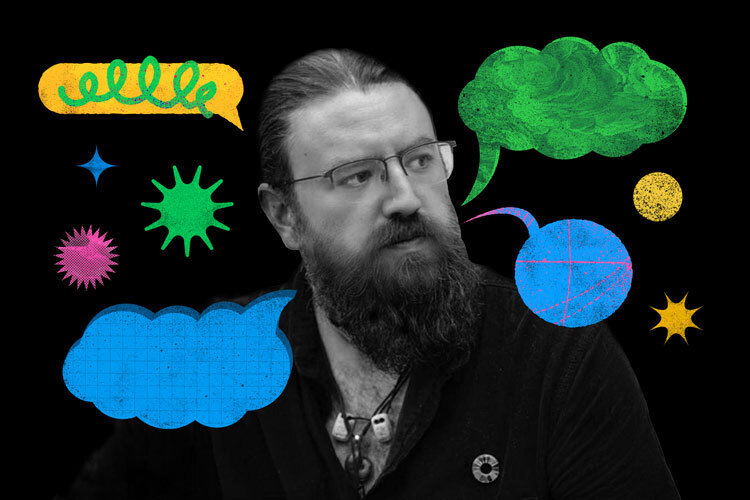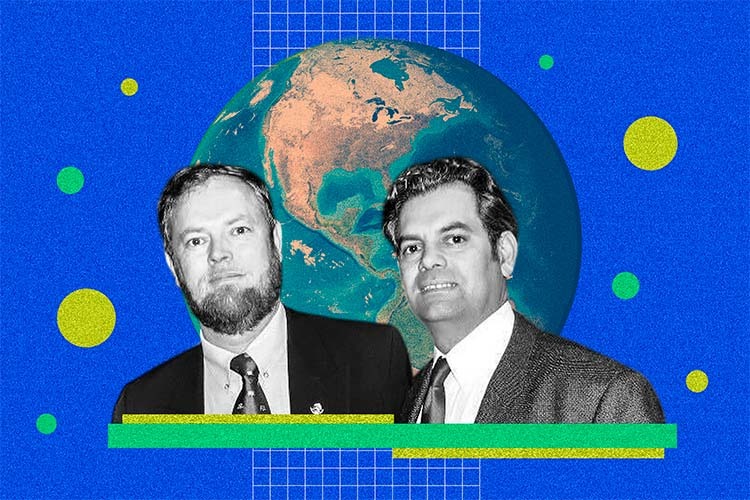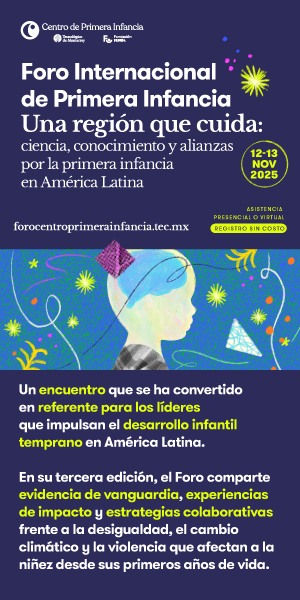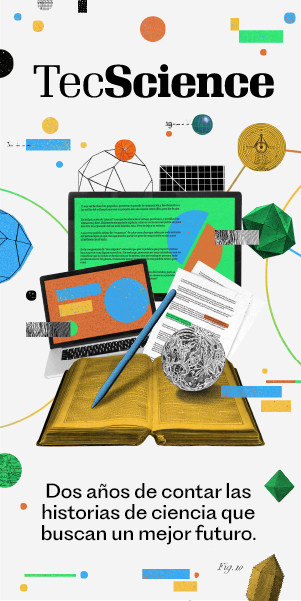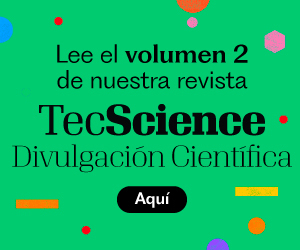As part of the International Early Childhood Forum, organized by the Early Childhood Center of Tecnológico de Monterrey and Fundación FEMSA, experts agreed that children under five years old are virtually ignored in global climate agendas.
Adrián Cerezo, researcher at the Yale Child Study Center; Joan Lombardi, expert at the Stanford Center on Early Childhood, and Sarah Beardmore, leader of the Global Partnership for Education, presented analysis on the issue from different perspectives like, science, public policy, and educational financing.
According to data shared by Cerezo, barely 2.3% of global climate financing is allocated to children; for early childhood, he said, that percentage is zero.
“Part of our job is to make sure that this issue begins to be considered as a basic one in all aspects,” he noted, mentioning that the recent United Nations Pact for the Future does not include any reference to early childhood.
The forum was held simultaneously as global delegations are negotiating climate strategies at COP30 in Brazil, but the notable absence in those conversations continues to be this vulnerable segment of the population.
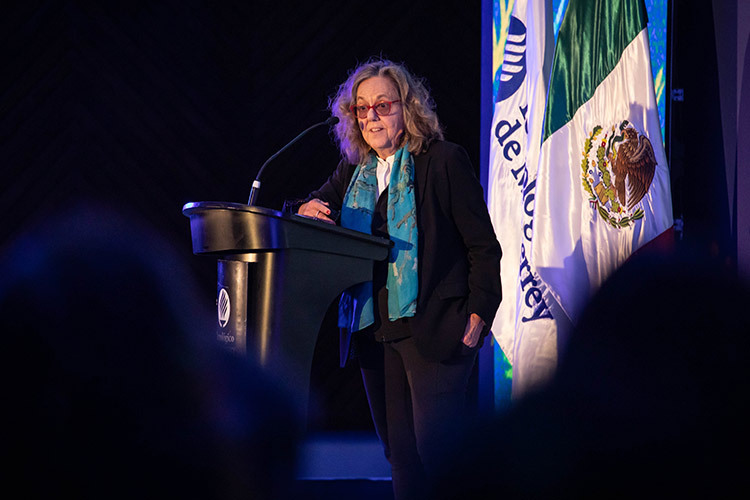
Climate Events Communicate Risk to Children
Lombardi recalled that the Asia-Pacific Regional Network for Early Childhood announced that this year’s Super Typhoon number 21 in the Philippines has already displaced one million children.
“We cannot ignore the vulnerabilities, because we are seeing how children and families suffer,” Lombardi emphasized.
She also shared data from a recently published report in The Lancet, which shows the expansion of extreme drought in recent decades.
Generations born after 1960 are projected to face significantly higher temperatures and a greater frequency of heatwaves, wildfires, and cyclones than their predecessors.
She also highlighted the importance of communicating risks to children. It is not enough to talk about climate change or carbon emissions, because it is not something they experience.
“We have to use the conditions they face,” Lombardi said. “They face heat, floods, wildfires. Those are the things that communicate a risk to children.”
As Lombardi explained, young children are particularly vulnerable during extreme weather events. They breathe faster than adults, are closer to the ground where pollutants concentrate, dehydrate more easily, and do not regulate body temperature in the same way.
“They don’t have to talk about climate change and carbon emissions,” the expert said, “but they have to talk about the relationship between that and what we know about child development.”
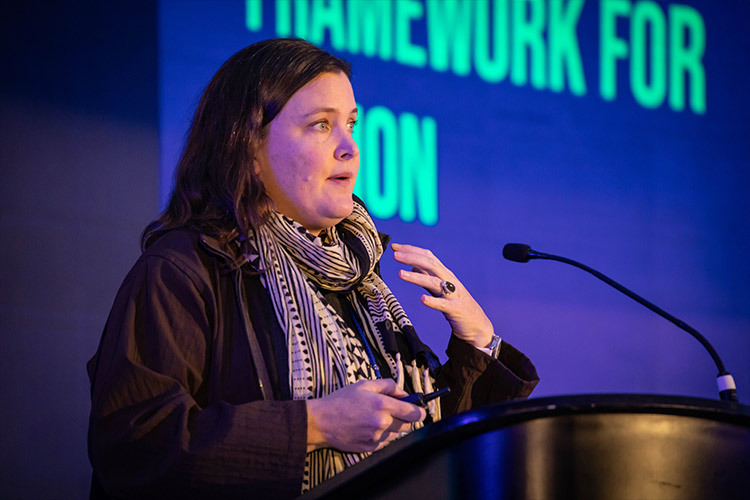
Disconnection Between Experience and Concepts
Various small-scale studies are documenting the climate impact on childhood. The Asia-Pacific Regional Network, for example, worked with an organization in Delhi to conduct focus groups with parents and health providers and registered an increase in asthma rates. Other studies in Ghana and six Arab countries surveyed families about their perception of climate conditions.
A recurring finding is the disconnection between experience and concept. “I remember one of the comments from these studies that said: ‘We don’t have climate change here. We just have a lot of floods,'” Lombardi observed.
On the other hand, a monthly survey in the United States, which includes approximately a thousand parents and a thousand childcare providers, found that 61% of families reported having experienced at least one extreme weather event.
The most mentioned topic was not the heat or floods themselves, but the stress from the rising costs of utilities and insurance, as well as the lack of shade in childcare programs.

Opportunities in Financing
Sarah Beardmore, from the Global Partnership for Education, shared that she interviewed the director of planning for the Ministry of Education in Vanuatu, who did not know how to support children in the face of climate change, beyond using schools as shelters during cyclones.
The answer, Beardmore explained, is in rethinking educational systems comprehensively. The Global Partnership developed a seven-dimension framework for climate action in education: policy and planning; coordination; data and evidence; finance; physical infrastructure; teaching and learning; and schools as part of the community.
The most concrete advances are happening in financing. In June, the Green Climate Fund approved an education program for the first time, establishing a precedent that investing in early childhood education is a legitimate climate strategy.
Haiti accessed resources from the Adaptation Fund for the education sector. Similar projects are currently being developed in Cambodia, South Sudan, and Tonga. Examples of investments in Nepal, Malawi, and Sierra Leone were also shared.
“There is a lot that can be done,” Beardmore noted. Climate financing can invest in building ventilation, drought-resilient water facilities, renewable building materials, school gardens, and green spaces.

Existing Frameworks and Tools
The panelists agreed that there is no lack of conceptual tools. The WHO’s “Nurturing Care” framework identifies five pillars for child development: health, nutrition, early learning, responsive caregiving, and security/safety.
Cerezo proposed that this framework could serve as infrastructure to link early childhood policies with climate agendas, although climate negotiators are often unaware of it.
In 2023, for example, the United Nations Committee on the Rights of the Child formally recognized that children have the right to a clean environment.
Several countries are beginning to include mentions of early childhood in their Nationally Determined Contributions (NDCs), the climate commitments that each nation presents to the UN.
Lombardi highlighted ideas for more sustainable early childhood programs: nature-based classrooms, plastic-free programs that use locally sourced food, and teaching sustainability concepts.
“I’m not talking about creating a climate change curriculum for young children,” she clarified. “But about creating the next generation of people who care for the earth.”
Interdisciplinary Dialogue
Beardmore emphasized the importance of indigenous knowledge, mentioning a program at the University of the Pacific where village elders are the teachers and the students must ask them to teach them. “There are wisdom traditions that have sustained interactions with the environment for thousands of years. And that knowledge has been marginalized.”
Cerezo concluded with an invitation to professionals from other sectors present at the Tec forum. The goal is to initiate interdisciplinary dialogues that generate policies beneficial for both early childhood and other fields of knowledge.
The three experts agreed that changing these figures will require not only more research and evidence but also a broader conversation about how the first years of life connect with building climate-resilient societies.
¿Te interesó esta historia? ¿Quieres publicarla? Contacta a nuestra editora de contenidos para conocer más marianaleonm@tec.mx





